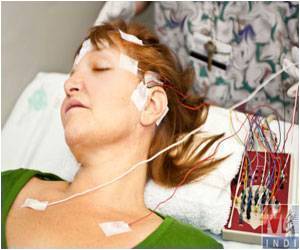Men are more likely than women to be diagnosed with minor stroke or transient ischemic attack (TIA), reveals a new study.

‘Minor stroke silently affects millions of people's lives. However, a new study highlights that men are more likely to be diagnosed with minor stroke or transient ischemic attack (TIA) compared to women.’
Read More..




"In our study, men were more likely to be diagnosed with TIA or minor stroke, and women were 10 percent more likely to be given a non-stroke diagnosis, for example, migraine or vertigo, even though men and women were equally likely to report atypical stroke symptoms," says study lead author Dr. Amy Yu, MD, a stroke neurologist at Sunnybrook Health Sciences Centre and assistant professor at the University of Toronto.Read More..
The findings of the study are published in JAMA Neurology and were presented at the European Stroke Organisation Conference in Milan, Italy.
The study found men and women equally described atypical stroke symptoms such as dizziness, tingling, or confusion which are not commonly thought of as related to stroke. Typical symptoms of a stroke are sudden weakness, face drooping, or speech difficulties.
A TIA occurs when there is temporary interruption of blood flow to the brain, and is often a warning sign of another stroke. TIAs can also be associated with permanent disability.
Discrepancy in Diagnoses
Advertisement
The research team say while further research is needed, it is possible that patient reporting of symptoms, interpretation of symptoms by clinicians, or a combination of both, could explain the discrepancy in diagnosis among men and women.
Advertisement
Previous studies on this topic have focused on patients diagnosed with stroke. Researchers in the current study included 1,648 patients with suspected TIA who were referred to a neurologist after receiving emergency care from 2013-2017, regardless of their final diagnosis.
Spotlight on Atypical Symptoms
A team of researchers notes it is an important opportunity for the public and clinicians to be aware of atypical symptoms of TIA.
"What's important to recognize in stroke is that the brain has so many different functions and when a stroke is happening, people can feel different things beyond the typical stroke symptoms," says Yu. "Accurately diagnosing TIA and stroke would change a patient's treatment plan and could help prevent another stroke from happening."
Source-Eurekalert















